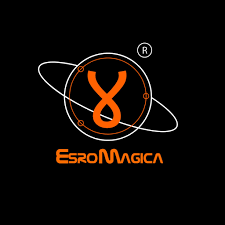
SHUKRATARA PROGRAM
Cloud Forming On Venus
Project "Sukrtara" aims to establish the first extraterrestrial farming platform in Venus’s upper clouds (50–60 km altitude), where conditions are surprisingly Earth-like (1 atm pressure, 20–60°C). By leveraging Venus’s dense CO2 atmosphere and solar energy, we will pioneer sustainable agriculture in deep space, advancing humanity’s potential for long-term colonisation.
Key Objectives
Floating Farming Labs: Test algae, moss, and genetically engineered plants like CO₂-optimised potatoes.
Sustainable Habitats: Develop acid-proof structures using lift gases derived from Venus’s own atmosphere.
Oxygen & Fuel Production: Extract life-sustaining elements using electrolysis on CO₂ and sulphuric acid.
Innovations
CRISPR-edited crops tailored to survive in high CO₂ and acidic environments.
Closed-loop life support systems with extremophile organisms.
AI-Powered Aerostats designed to survive Venus’s fast-moving winds.
Why Venus?
1
Habitable Clouds
The upper atmosphere offers milder conditions than Mars (no extreme cold, radiation, or low gravity).
Abundant Resources
CO₂ for crops, sulphuric acid for water/fuel, and 2.6x Earth’s solar energy.
2
3
Economic Viability
Lower transit time (5 months) and simpler aerobraking than Mars landings.
Project Timeline
2019-2024

PHASE 0
Project design
2025-2028

PHASE 1
Advanced R&D
2029-2032

PHASE 2
Systems Test
2038-2047

PHASE 3
Flight Build
2033-2036

PHASE 4
Launch Test
2037

PHASE 5
Launch of both modules
2038-2047

PHASE 6
Operations
2100

PHASE 7
Cloud City
Program Teams Leads
Project
Directors
Puja Kumari
Mission
Directors
Mahima Gehlot
Flight
Directors
Harshita Goje &
Atul Krishna
Propulsion
Lead
Atul Krishna
Material Scientist
Shiva Likki
CAP
Puja Kumari
Venus Surface Temperature
Program Modules
Design and construction of a lightweight structure is required, which can accommodate an internal farming module.

FREEDOM MODULE
Venus' upper atmosphere (50-65 km altitude) presents a uniquely habitable environment in the solar system, with Earth-like pressure (0.5-1 bar) and temperature ranges (0-50°C). However, designing sustainable floating habitats requires careful consideration of buoyancy systems, structural materials, and operational safety. We have structures for our habitat design.
Module Freedom Structure:
- Floating Module (Aerostat):
The Zeppelin-inspired airship provides buoyancy and mobility within the upper cloud layers of Venus, specifically at altitudes between 50 and 60 kilometres. Utilises helium lift, thermal shielding, and corrosion-resistant materials. -
Cultivation Module (DAVINCI+ Adaptation):
A re-engineered version of the DAVINCI+ descent probe, retrofitted as a biolab for hydroponics and aeroponics. Supports controlled-environment plant growth and biological research.
MIDNIGHT MODULE
A semi-rigid or rigid airship combining hydrogen (H₂) or helium (He) lift gas with electric ducted fans for propulsion. The frame could use carbon-fiber-reinforced silicon carbide (SiC) for structural integrity and acid resistance.
Advantages:- Manoeuvrability: Propulsion enables navigation of wind shear and station-keeping, critical given Venus's violent atmospheric dynamics
- Modularity: compartmentalised gas cells and attachable habitat pods enhance scalability.
- Redundancy: Multi-cell gas systems reduce catastrophic failure risk.










